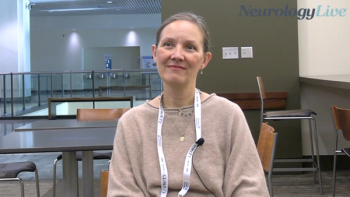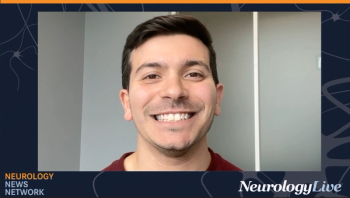
Gaining a Greater Understanding of Movement Disorders: An Introduction to the NeuroCME 2024 Movement Disorders Review Course
Khashayar Dashtipour, MD, PhD, an associate professor of neurology at the Loma Linda University Health System, provided an overview of an upcoming CME-credited educational course on movement disorders scheduled for June 1st in Minnetonka, Minnesota.
In a few weeks, several movement disorders specialists will present the NeuroCME 2024 Movement Disorders Review, an in-person only, free CME event in Minnetonka, Minnesota. Hosted on June 1st, the event features over 130 interactive patient videos and offers attendees the opportunity to earn 6 complimentary CME credits. Participants will enjoy numerous networking opportunities and hands-on experience in an immersive, focused and intentional environment.
Some of the learning objectives include gaining a greater understanding of the presentation and phenomenology associated with Parkinson’s disease (PD) and other movement disorders, as well as the diagnostic approaches and tools available to clinicians. In addition, attendees will learn to identify and manage non-motor features of PD and other movement disorders. Khashayar Dashtipour, MD, PhD, the course director, highlights that the smaller size of the meeting, the interactive video structure, and the opportunities for active participation provide a unique and effective way to teach about movement disorders.
Dr. Dashtipour, sat down with NeurologyLive® weeks before the meeting to discuss the event's details and the educational benefits it offers to clinicians and young medical students. He provided an overview of some of the sessions, highlighted the uniqueness of a video-based program, and discussed the various movement disorder-related topics that will be covered.
NeurologyLive: Please provide a bit of an overview of this event and what it entails.
This is a specialized educational course with one video clip after another. To give you an idea: in one session, which runs around 45 minutes, the audience watches between 20 to 30 videos. The entire meeting, which offers 6 CME credits, comprises around 150 videos over 6 hours. It’s not the kind of meeting where you start by saying, “What's the definition of this? What is the etiology? What is the pathophysiology?” It's not something you can just go and read about.
I explained the event to the audience by saying that we physicians learn from our patients. I call this meeting a patients’ testimonial, where patients tell us about their problems and teach us whether they respond to medications or other treatments. This is one aspect of the event, which, as I mentioned, is very video-oriented.
This is not a meeting with several hundred attendees; we typically have around 30 to 40 participants, sometimes up to 60. It's a very intimate setting, which makes it highly interactive. Given its video-based nature, we engage in discussions together and encourage audience participation. Unlike many free or "complimentary" virtual events, this is the only live event offering CME credit at no cost to attendees. We've secured grants to support this, and I personally believe in providing free education when possible. We've been holding this event for two years, celebrating our two-year anniversary last March. In total, we’ve conducted close to 15 of these events over the past two years.
How does the agenda align with the current goals in movement disorder care?
Because we travel to different cities, the agenda stays the same. This consistency has proven to be very encouraging for us. We have attendees who come back to attend another event in a different state after several months because they found it so useful. At our last event in Detroit, two attendees asked me, where the next one would be? I mentioned that the agenda remains the same, but they still said, "No, I want to come again; it was really helpful." The agenda typically starts in the morning with a session on motor fluctuations in Parkinson’s disease, which I personally lead.
After I discuss motor fluctuation, detection, and management with medical therapy, my colleague Dr Michele Tagliati, MD., takes over the next session to discuss the surgical approach to managing movement disorders, with a focus on deep brain stimulation. Following that, Dr Alberto Espay, MD, MSc, leads a session on drug-induced movement disorders, which are mainly hyperkinetic movement disorders. This session covers a variety of drug-induced disorders, including tremor, tardive dyskinesia, tardive dystonia, and myoclonus, as well as the different ways patients manifest these symptoms.
We have a local chairperson for each city we visit. Our own faculty members really enjoy the “Chairman Round,” a presentation by the chairperson, because of their extensive expertise. This half-hour session is flexible and based on whatever the local faculty decides to present. We've had presentations on topics like tremors, gait, and atypical Parkinsonism with an emphasis on eye movements. One of our faculty members even discussed alternative medicine during a Chairman Round. I review the format of our venue with the local faculty in advance to ensure their topic fits. For instance, we had Dr. Shilpa Chitnis, MD, PhD, FAAN, present on functional movement disorders in Dallas.
Each of us presents two topics. Dr Tagliati then talks about the utilization of botulinum toxin in the management of movement disorders. He covers botulinum toxin injections for conditions such as dystonia, focal dystonia, sialorrhea, blepharospasm and spasticity. I will then discuss the non-motor aspects of PD, including cognitive impairment, hallucination, depression, anxiety, apathy, and hypotension. The event concludes with Dr. Espay’s session on functional movement disorders. That is a very challenging topic, and he shares many interesting videos of functional movements. That session is particularly interactive, as we discuss the functional aspects versus the phenomenology of abnormal movements.
Because we have traveled to different states and cities, we haven't needed to change the agenda significantly. However, the agenda has been updated over the years based on new medications and our evolving understanding of the disease. The current presentation is quite different from the first one two years ago, as several new videos have been added.
What can younger medical students gain from these meetings?
The demographics of our attendees are similar to those at the AAN Annual Meeting. You can find a range of participants, from undergraduates conducting research in the lab to faculty members attending sessions. Although it's not a thousand-person audience, we still have a diverse group of attendees.
For medical students, I strongly encourage attendance. In academic practice, we have our own residents, medical students, and fellows. When we were in southern California, my residents and fellows attended. In other locations, other faculty chairs also encourage their medical students to attend, recognizing its value. I don’t want it to be didactic like reading a book. If you’re a medical student without much knowledge about movement disorders, by the end of the day, you will learn a lot about what you need to know. For example, when we discuss motor fluctuations in PD, you will understand what motor fluctuations are and how to manage them. The same applies to botulinum toxin treatments and the phenomenology of movement disorders.
The value for medical students, residents, and fellows lies in the comprehensive coverage they receive, from A to Z. They can gain a basic understanding of our approach to movement disorders, learn how we define certain aspects of these disorders, and grasp the phenomenology involved, leading to more advanced discussions. Even among faculty, we may have disagreements, but we can discuss them through video formats. In my opinion, this can help them realize that much of science is not as factual as it seems but is often a matter of perspective. While the data speaks for itself, the interpretation and explanation of the data can be eye-opening. This broader view is especially beneficial for medical students, providing them with a wider perspective early in their medical careers.
Transcript edited for clarity.
Newsletter
Keep your finger on the pulse of neurology—subscribe to NeurologyLive for expert interviews, new data, and breakthrough treatment updates.



































